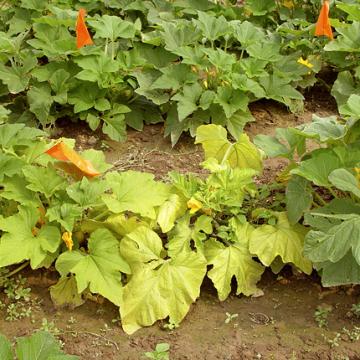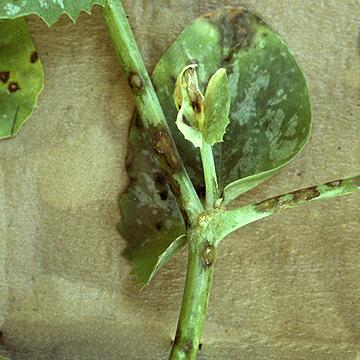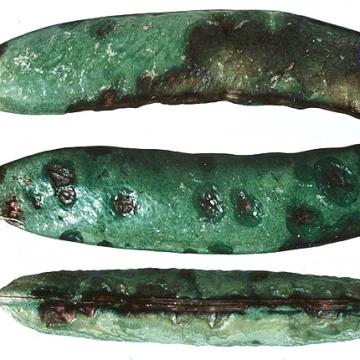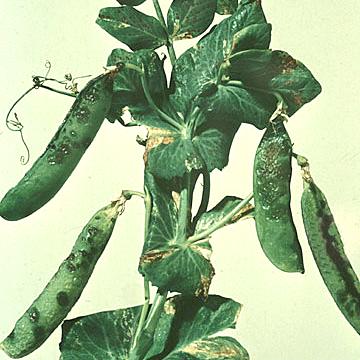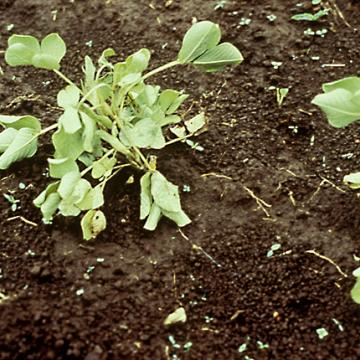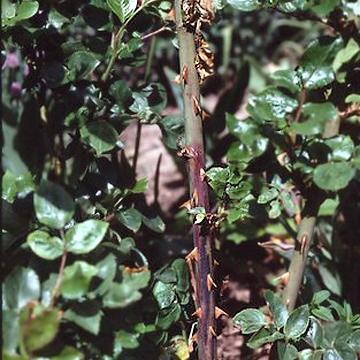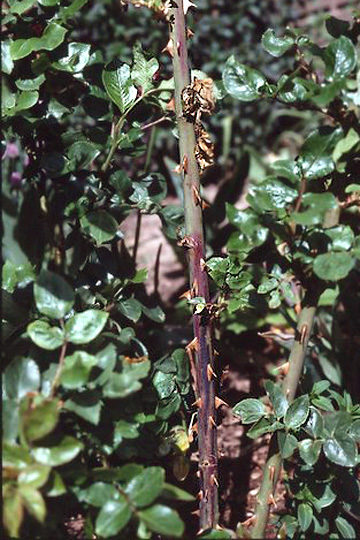DISEASE: Aster yellows
HOST: Squash
Diagnostic characteristics for the disease are yellowing of young leaves, proliferation of secondary shoots, and rigid erect habit. Leaves are misshapen and smaller than normal and have stiff, thick laminae.
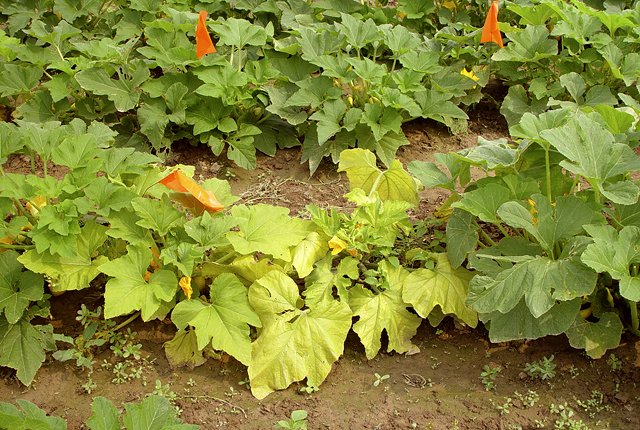
Aster yellows | Squash
DISEASE: Aster yellows
HOST: Squash (Cucurbita sp.)
PATHOGEN: 'Candidatus Phytoplasma asteris'
PATHOGEN SYNONYM: Phytoplasma Aster yellows group
SOURCE: S. Miller
DISEASE: Bacterial blight
HOST: Pea
Pea pod with diseased seeds and infection along the suture.
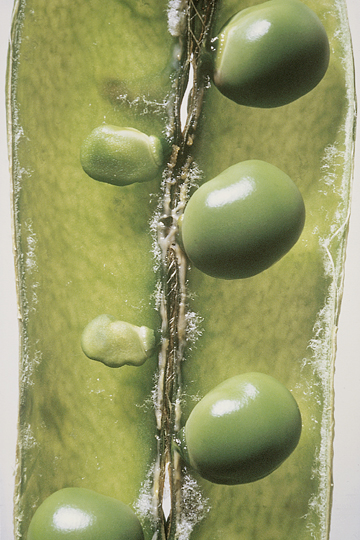
Bacterial blight | Pea
DISEASE: Bacterial blight
HOST: Pea (Pisum sativum)
PATHOGEN: Pseudomonas syringae pv. pisi
SOURCE: J. M. Kraft
DISEASE: Bacterial blight
HOST: Pea
Pea plant with water-soaked lesions on stems and leaves with some bacterial exudate evident. Irregular lesions turn dark brown with light tan centers. Severe distortion of stems, petioles, and growing points may occur.
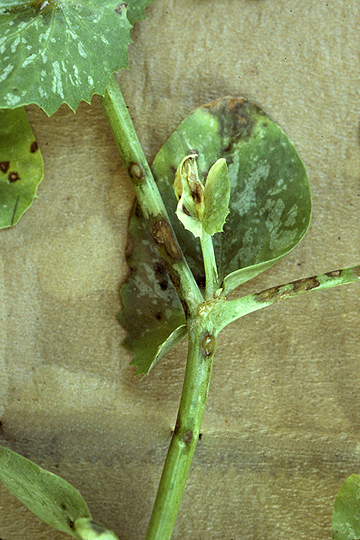
Bacterial blight | Pea
DISEASE: Bacterial blight
HOST: Pea (Pisum sativum)
PATHOGEN: Pseudomonas syringae pv. pisi
SOURCE: S. Thomson
DISEASE: Bacterial blight
HOST: Pea
Dark lesions on pods and dorsal sutures.
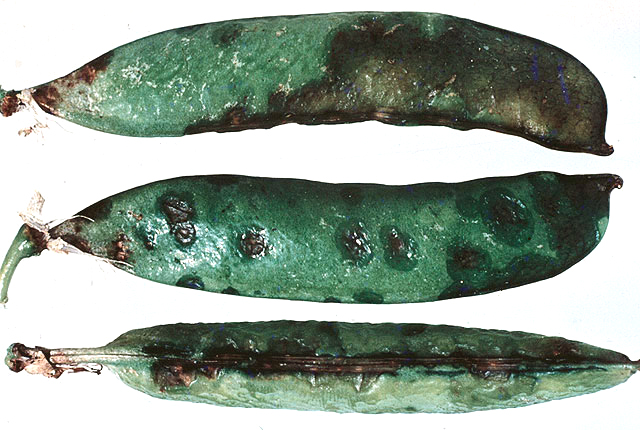
Bacterial blight | Pea
DISEASE: Bacterial blight
HOST: Pea (Pisum sativum)
PATHOGEN: Pseudomonas syringae pv. pisi
SOURCE: J. Young
DISEASE: Bacterial blight
HOST: Pea
Severely diseased plant with array of blight symptoms.
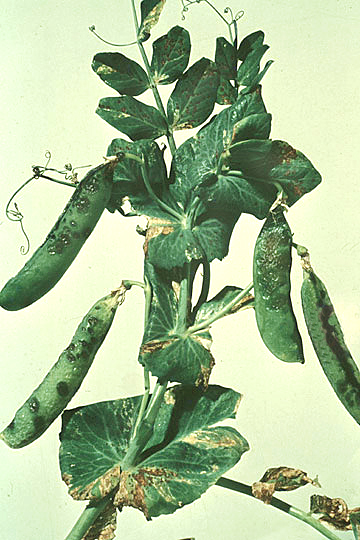
Bacterial blight | Pea
DISEASE: Bacterial blight
HOST: Pea (Pisum sativum)
PATHOGEN: Pseudomonas syringae pv. pisi
SOURCE: J. Young
DISEASE: Bacterial blight
HOST: Pea
Leaves with typical blight symptoms. The disease also affects nodes, stipules, floral parts, stems, and pods.
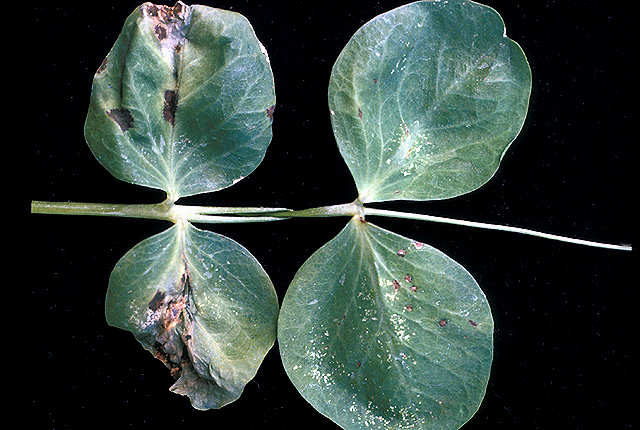
Bacterial blight | Pea
DISEASE: Bacterial blight
HOST: Pea (Pisum sativum)
PATHOGEN: Pseudomonas syringae pv. pisi
SOURCE: M. Schroth
DISEASE: Bacterial wilt
HOST: Pea
Wilted pea plants.
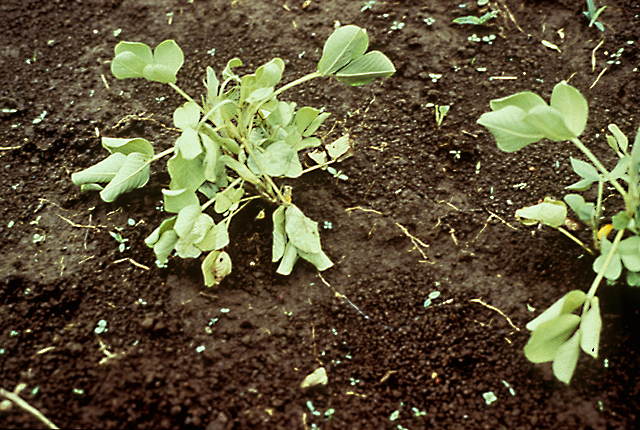
Bacterial wilt | Pea
DISEASE: Bacterial wilt
HOST: Pea (Pisum sativum)
PATHOGEN: Ralstonia solanacearum
PATHOGEN SYNONYM: Pseudomonas solanacearum
SOURCE: A. Hayward
DISEASE: Bacterial wilt
HOST: Squash
Field with severe symptoms of wilt. Foliage often is chlorotic and leaf margins may be chlorotic and necrotic before plant death. Bacterial ooze may be seen streaming from the xylem when infected stems are cut.
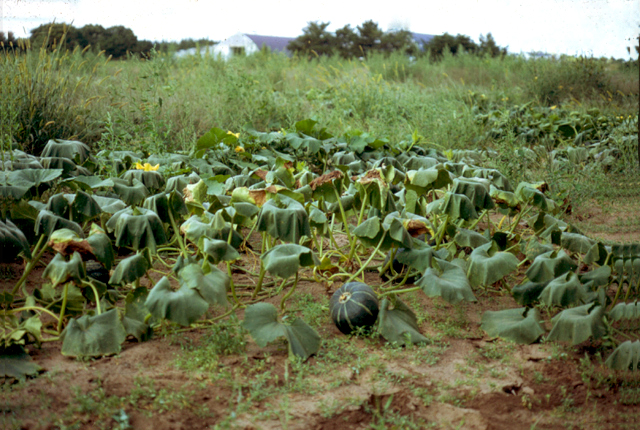
Bacterial wilt | Squash
DISEASE: Bacterial wilt
HOST: Squash (Cucurbita maxima)
PATHOGEN: Erwinia tracheiphila
SOURCE: B. Jacobsen, M. Shurtleff


